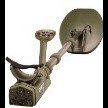U.S. Gold Standard Timeline And Confiscation
-
Similar Content
-
- 42 replies
- 3,547 views
-
- 11 replies
- 1,497 views
-
- 23 replies
- 3,678 views
-
- 37 replies
- 5,965 views
-
- 9 replies
- 762 views
-
- 18 replies
- 2,517 views
-
-










Recommended Posts
Create an account or sign in to comment
You need to be a member in order to leave a comment
Create an account
Sign up for a new account in our community. It's easy!
Register a new accountSign in
Already have an account? Sign in here.
Sign In Now